PSALTER, with Old and New Testament Canticles, in Church Slavonic, written in round Glagolitic script, ILLUMINATED MANUSCRIPT ON VELLUM [Macedonia/Bulgaria, 12th/13th century] ca.225 x ca.160mm, 132 ff., collation: 1 8 (within bifolium of pastedown and stub), 2-16 8 , 17 8 (within bifolium of stub and pastedown; vi-ix cut to stubs). Justification: ca.165 x ca.115mm. Written in brown ink in a neat, small, round Glagolitic hand on thick vellum, in 2 columns of 30 lines, ruled in dry point (8 verticals, 30 horizontals), letters below lines, prick-marks in margins of most leaves, gatherings (tetradia) numbered at beginning and end, marginal headings to psalms in old Cyrillic script. Decorated initials to each psalm in brown ink, coloured in red, orange, yellow and green, 5-14 lines, most with plaited strapwork and foliate extensions, 12 with heads of monsters and 12 with one or two human faces, most bearded, some haloed, one female. Half-page headpiece to Psalter with geometrical and strapwork decoration, in brown ink, red, orange, yellow and green; similar but smaller headpiece to Canticles (f.16 6 v). Bound in later stained vellum over wooden boards, board edges cased in iron, wrought iron ornament on covers, handle on upper cover, clasps. (Natural flaws to vellum, some rubbing and darkening; edges of leaves darkened, possibly by smoke; some splitting to vellum on boards, some wear at head and tail of spine.) AN EXTREMELY RARE UNRECORDED EARLY SLAVONIC PSALTER IN CLASSICAL (ROUND) GLAGOLITIC SCRIPT. This script, the first Slavic alphabet, was created by the 9th-century Slavic-speaking Byzantine missionary to Moravia, Constantine (St. Cyril): the possession of a distinct alphabet gave Slavic the dignity necessary for use in Biblical translation and liturgy (against the 'trilingual heresy' that held there to be only three sacred languages, Hebrew, Greek and Latin). After the expulsion of the Slavic monks from Moravia, in Croatia the square form of Glagolitic early replaced the round (and continued to be used for liturgical books into this century), while in the wider Slavic realms the Greek-derived Cyrillic script soon came to predominate. In western Bulgaria (Macedonia), however, the earlier Glagolitic tradition seems to have continued in parallel with Cyrillic. This earlier script is known in only five substantial codices (C. Zographensis, C. Marianus, C. Assemanianus, Psalterium Sinaiticum and Euchologium Sinaiticum) and a number of fragments, mostly of Macedo-Bulgarian provenance (NONE IN COLLECTIONS IN GREAT BRITAIN OR THE UNITED STATES). While none of them is dated, they are conventionally referred to the late 10th, 11th, or early 12th centuries. In addition, short passages of round Glagolitic occur in Cyrillic MSS of similar provenance from the 12th-13th centuries. In ornamental styles, orthography, language and textual type our manuscript represents a mixture of old traditions, associated with early Glagolitic, and newer ones which emerged in the 12th or 13th century. Thus, while the initials decorated with plaited strapwork are typical of Glagolitic MSS, and the designs incorporating faces are reminiscent of Assemanianus, those with heads of monsters resemble the teratological style of ornamentation met in Cyrillic MSS mainly from the 13th century onwards. Likewise, the text presents a mixture of conservative and innovatory features, with items of vocabulary typical of an early stage in the tradition and variants normally found later, as well, for instance, as occasional confusion of the letters for the front and back nasal vowels in a way typical of Macedo-Bulgarian MSS from the 12th century onwards. Given that the mixture of traditions discussed above is seen in Macedo-Bulgarian Cyrillic Psalter MSS of the 13th century, it is reasonable to conclude that our MS is of this area and approximate date. Another interesting feature is the unusual order of the Canticles, with The Song of Moses followed by the Prayer of Habak
PSALTER, with Old and New Testament Canticles, in Church Slavonic, written in round Glagolitic script, ILLUMINATED MANUSCRIPT ON VELLUM [Macedonia/Bulgaria, 12th/13th century] ca.225 x ca.160mm, 132 ff., collation: 1 8 (within bifolium of pastedown and stub), 2-16 8 , 17 8 (within bifolium of stub and pastedown; vi-ix cut to stubs). Justification: ca.165 x ca.115mm. Written in brown ink in a neat, small, round Glagolitic hand on thick vellum, in 2 columns of 30 lines, ruled in dry point (8 verticals, 30 horizontals), letters below lines, prick-marks in margins of most leaves, gatherings (tetradia) numbered at beginning and end, marginal headings to psalms in old Cyrillic script. Decorated initials to each psalm in brown ink, coloured in red, orange, yellow and green, 5-14 lines, most with plaited strapwork and foliate extensions, 12 with heads of monsters and 12 with one or two human faces, most bearded, some haloed, one female. Half-page headpiece to Psalter with geometrical and strapwork decoration, in brown ink, red, orange, yellow and green; similar but smaller headpiece to Canticles (f.16 6 v). Bound in later stained vellum over wooden boards, board edges cased in iron, wrought iron ornament on covers, handle on upper cover, clasps. (Natural flaws to vellum, some rubbing and darkening; edges of leaves darkened, possibly by smoke; some splitting to vellum on boards, some wear at head and tail of spine.) AN EXTREMELY RARE UNRECORDED EARLY SLAVONIC PSALTER IN CLASSICAL (ROUND) GLAGOLITIC SCRIPT. This script, the first Slavic alphabet, was created by the 9th-century Slavic-speaking Byzantine missionary to Moravia, Constantine (St. Cyril): the possession of a distinct alphabet gave Slavic the dignity necessary for use in Biblical translation and liturgy (against the 'trilingual heresy' that held there to be only three sacred languages, Hebrew, Greek and Latin). After the expulsion of the Slavic monks from Moravia, in Croatia the square form of Glagolitic early replaced the round (and continued to be used for liturgical books into this century), while in the wider Slavic realms the Greek-derived Cyrillic script soon came to predominate. In western Bulgaria (Macedonia), however, the earlier Glagolitic tradition seems to have continued in parallel with Cyrillic. This earlier script is known in only five substantial codices (C. Zographensis, C. Marianus, C. Assemanianus, Psalterium Sinaiticum and Euchologium Sinaiticum) and a number of fragments, mostly of Macedo-Bulgarian provenance (NONE IN COLLECTIONS IN GREAT BRITAIN OR THE UNITED STATES). While none of them is dated, they are conventionally referred to the late 10th, 11th, or early 12th centuries. In addition, short passages of round Glagolitic occur in Cyrillic MSS of similar provenance from the 12th-13th centuries. In ornamental styles, orthography, language and textual type our manuscript represents a mixture of old traditions, associated with early Glagolitic, and newer ones which emerged in the 12th or 13th century. Thus, while the initials decorated with plaited strapwork are typical of Glagolitic MSS, and the designs incorporating faces are reminiscent of Assemanianus, those with heads of monsters resemble the teratological style of ornamentation met in Cyrillic MSS mainly from the 13th century onwards. Likewise, the text presents a mixture of conservative and innovatory features, with items of vocabulary typical of an early stage in the tradition and variants normally found later, as well, for instance, as occasional confusion of the letters for the front and back nasal vowels in a way typical of Macedo-Bulgarian MSS from the 12th century onwards. Given that the mixture of traditions discussed above is seen in Macedo-Bulgarian Cyrillic Psalter MSS of the 13th century, it is reasonable to conclude that our MS is of this area and approximate date. Another interesting feature is the unusual order of the Canticles, with The Song of Moses followed by the Prayer of Habak

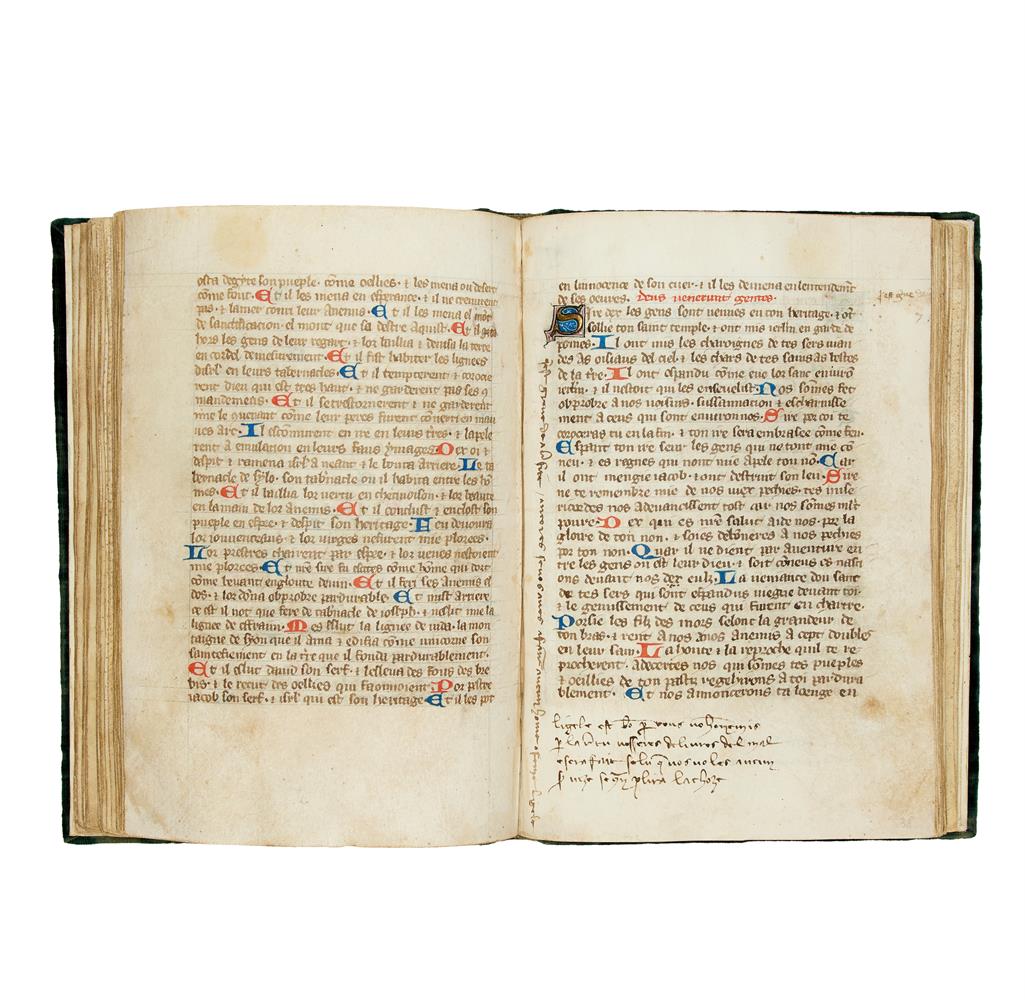

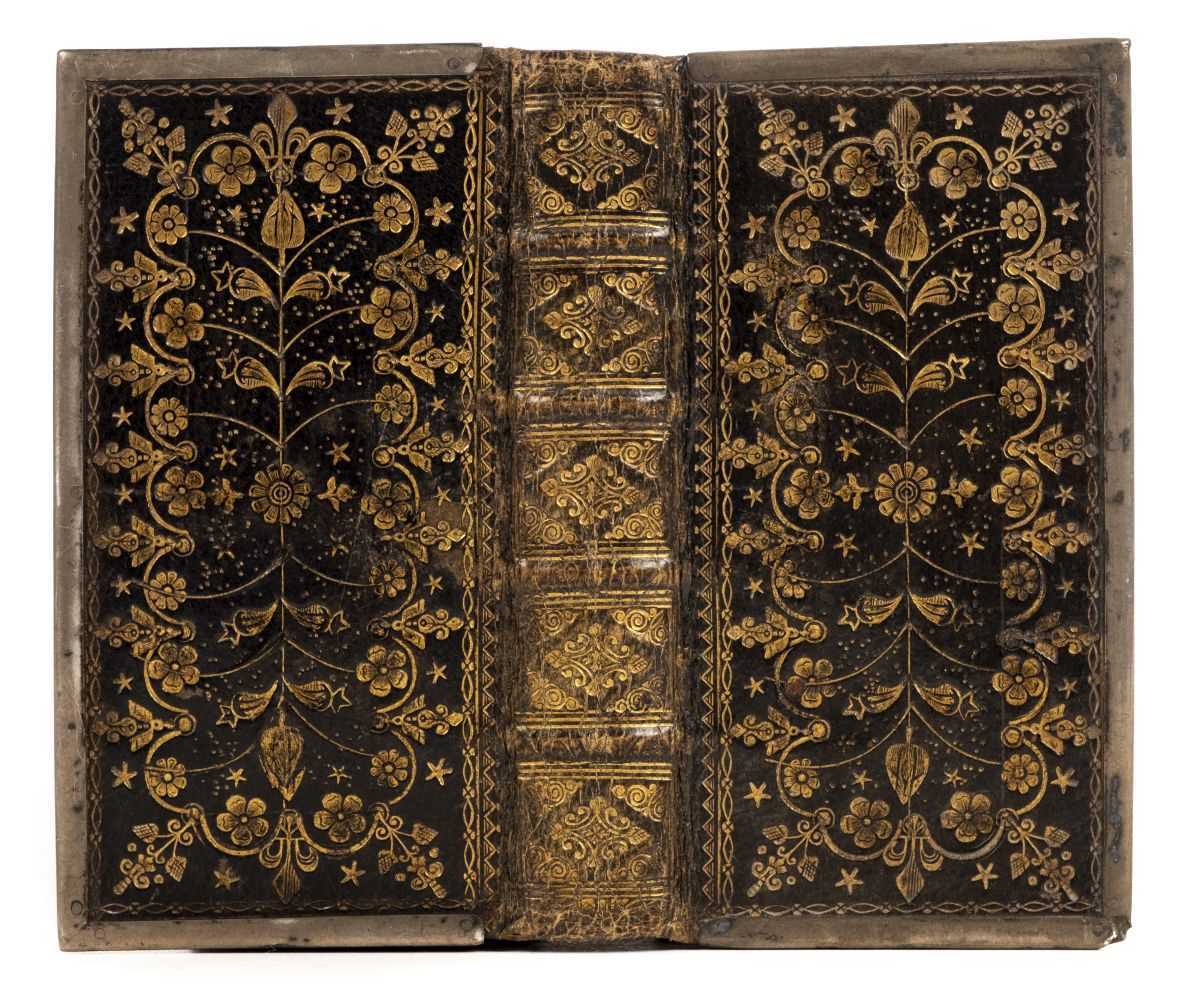
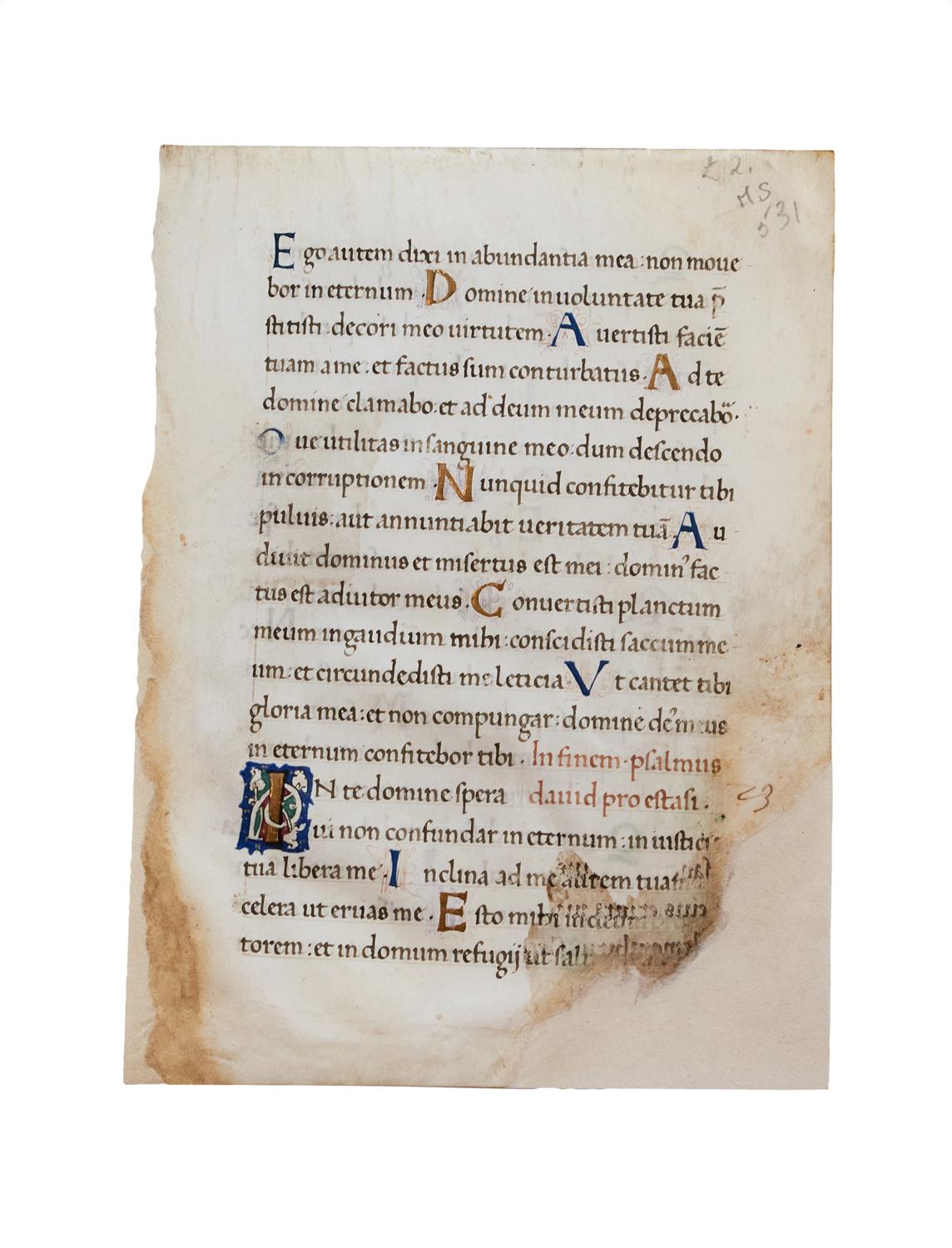
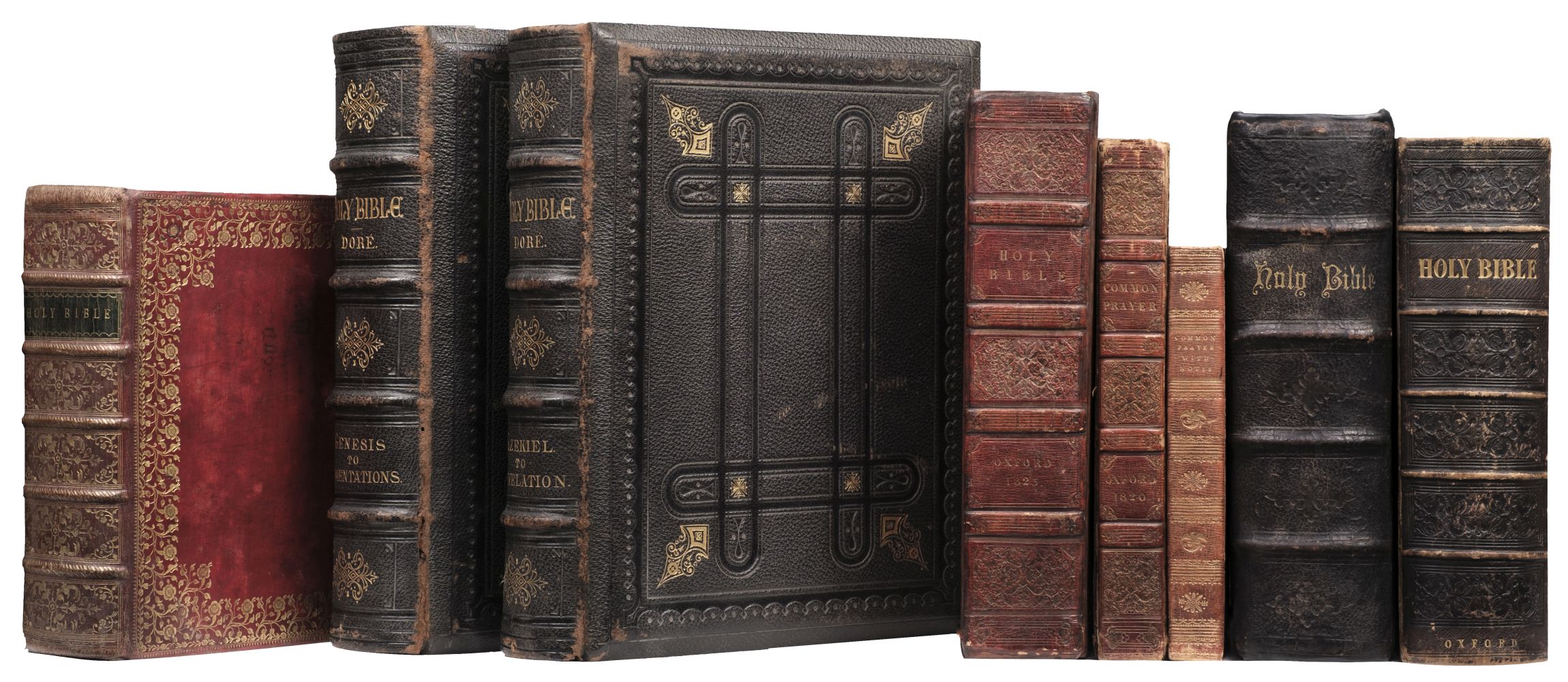
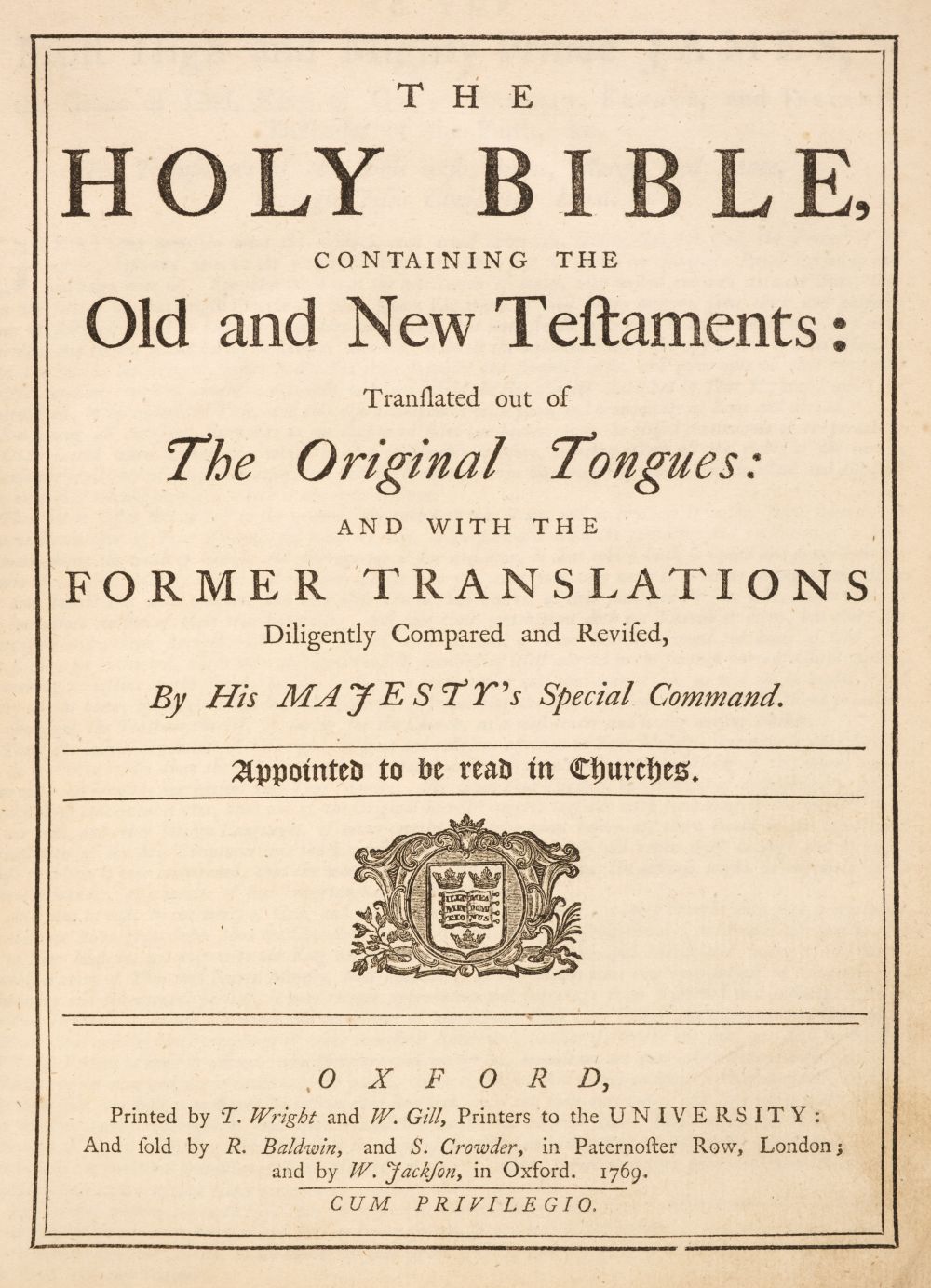







.jpg)
Try LotSearch and its premium features for 7 days - without any costs!
Be notified automatically about new items in upcoming auctions.
Create an alert